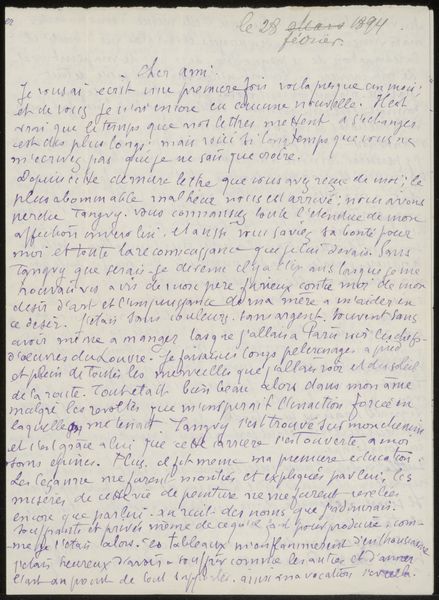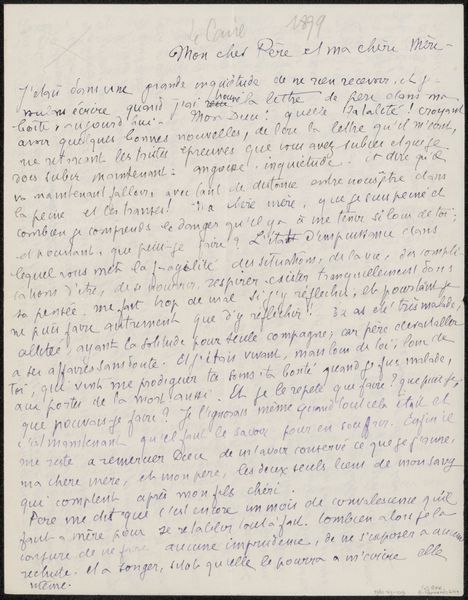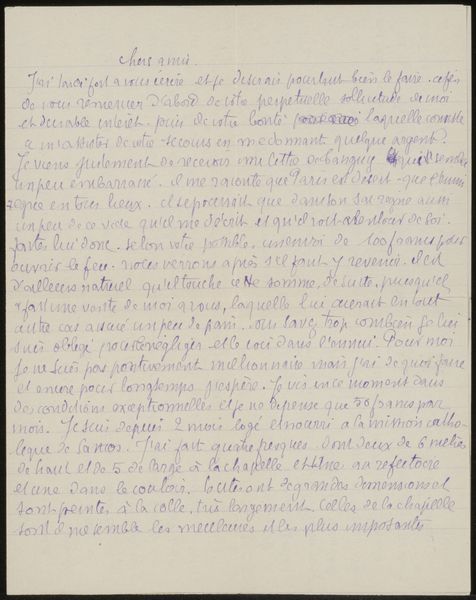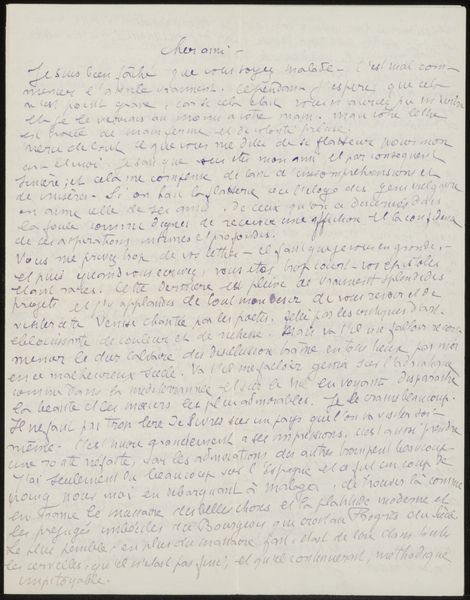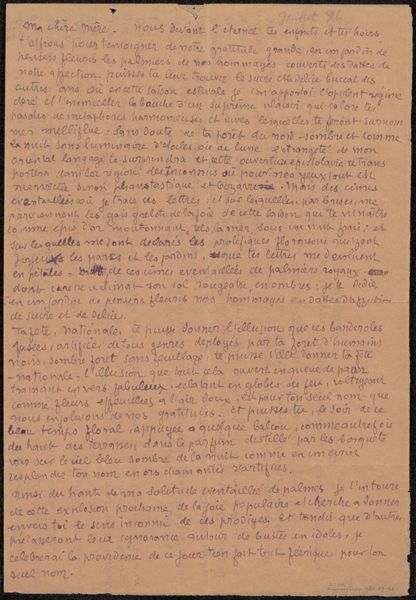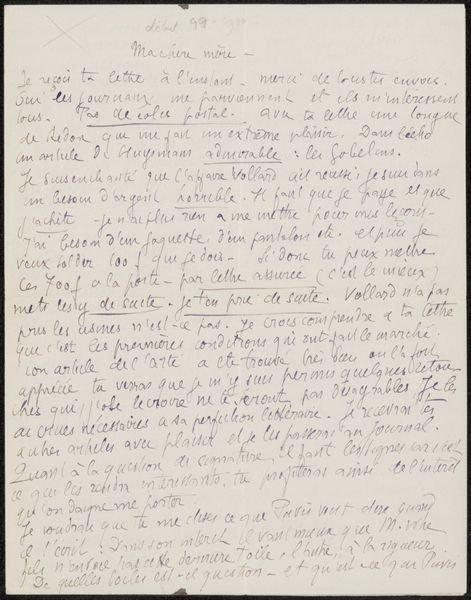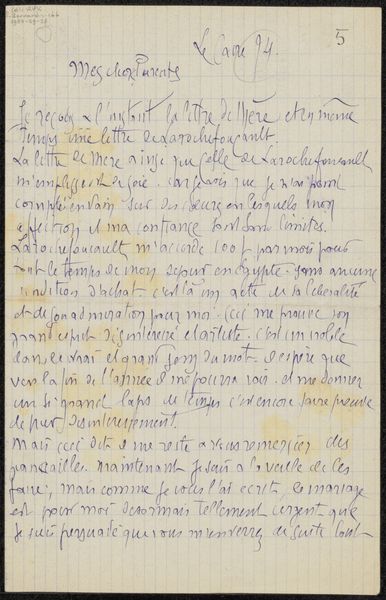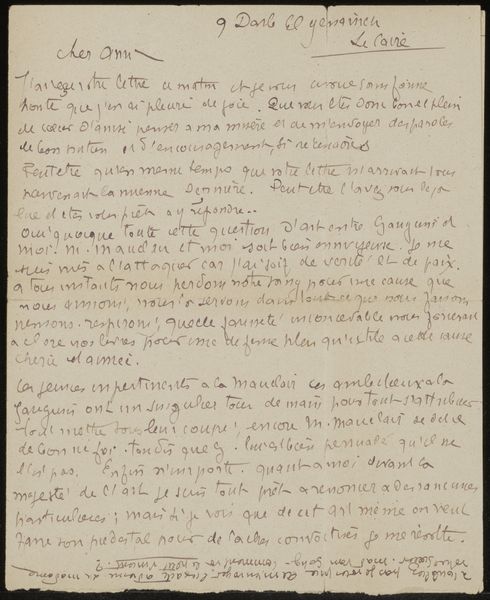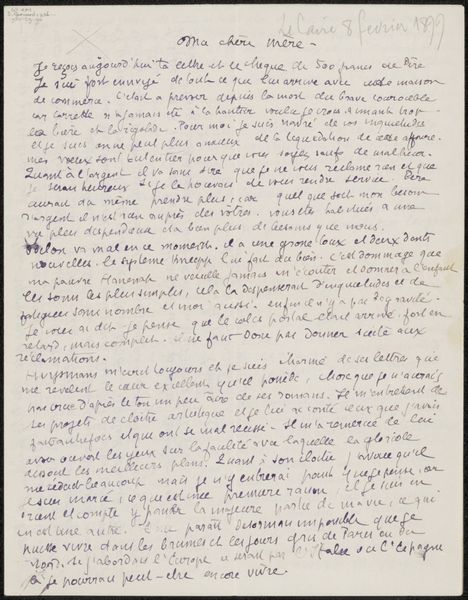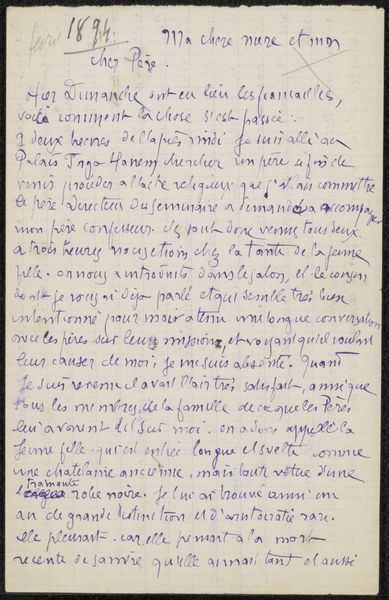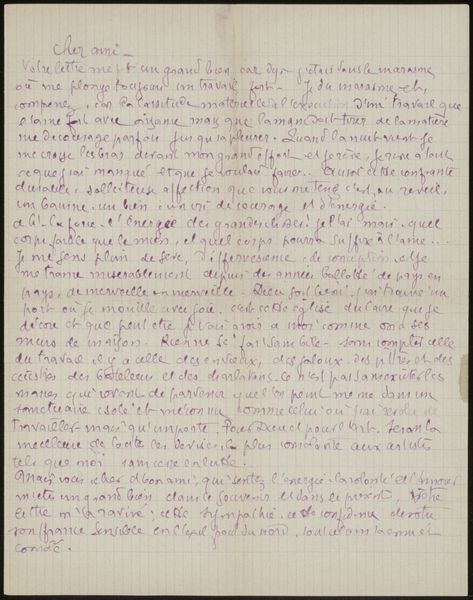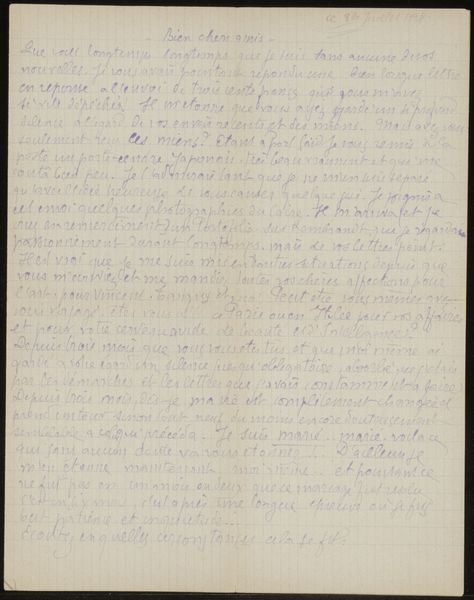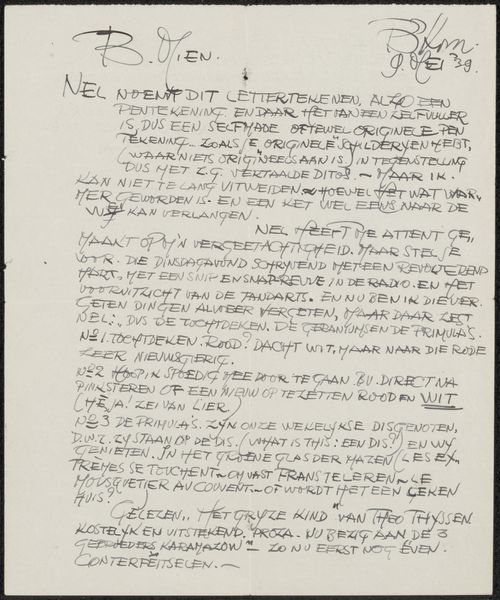
drawing, paper, ink
#
drawing
#
paper
#
ink
Copyright: Rijks Museum: Open Domain
Curator: Today we’re looking at "Brief aan Andries Bonger," a drawing by Émile Bernard created before 1898. It’s composed of ink on paper. I’m always struck by the intimacy of artists' personal correspondence. Editor: It has a dreamy quality... It reminds me of reading someone else's diary or stumbling upon a half-forgotten memory. The handwriting itself, so close together, feels like it's holding secrets, whispering them just loud enough for you to try and decipher. Curator: Yes, the script gives the whole piece an incredible density, don't you think? The composition is entirely consumed by it, save for some modest margins. We know from the letter itself that the artist corresponds with Andries Bonger on his immediate departure for the Netherlands. Editor: Absolutely. I wonder what his state of mind was like as he penned these words? The way the writing seems to cascade down the page almost evokes a feeling of anxious energy. Was he rushing, or simply carried away by his thoughts? The act of putting pen to paper in this way, allowing thoughts to spill forth—it feels unfiltered, almost primal. Curator: Consider also the symbolic nature of letter-writing. Letters are never quite the same as face-to-face conversation, are they? They allow a person to compose their thoughts in a more structured manner while at the same time acting as a vehicle of genuine sentiments. Letters act as tokens, physical reminders, bridges across time and distance, containing words but also emotion. Editor: It’s a fragile means of connection in this sense—one that speaks to something fundamentally human, this desire to reach out, to share, to connect. This need persists across generations. Looking at this drawing really sparks an urge to put pen to paper myself! There is an unmistakable magic to analogue forms of correspondence that seems more poignant now than ever. Curator: A lovely sentiment, and an insight perfectly pitched to the affective qualities of Bernard's sketch. It speaks to how art and visual materials allow for continued connection through a cultural transmission of forms and affects. Editor: I'm so grateful we got the chance to dive into these deeply felt, deeply symbolic gestures today!
Comments
No comments
Be the first to comment and join the conversation on the ultimate creative platform.
